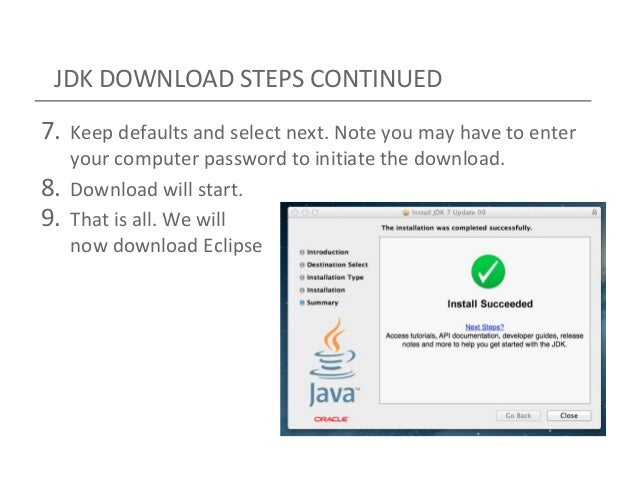

Related: How to Install Visual Studio Code on Mac Related: How to Install Homebrew on macOSĪ code editor – This tutorial uses Visual Studio Code (VS Code), but any code editor will work. To follow along, ensure you have the following:Ī Mac computer – This tutorial uses Big Sur, but any Mac running macOS 11.0 or higher will work.

This tutorial comprises of hands-on demonstration. Read on to expand your programming language repertoire! Prerequisite In this tutorial, you will learn to install Java on a Mac in many ways and create a simple project to get you started in your Java journey. Java, one of the most popular programming languages, lets you develop web, mobile, and desktop applications. As you can see below, only java11 and java are available.Unsure how to install Java on Mac? As a developer, having different programming languages, like Java, installed on your computer is crucial. Use the following command.īrew search -formulae java. bin/bash -c “$(curl -fsSL )"Īfter this completes, we can use homebrew to install available formulae or cask with just one line commands brew install xxxx or brew install -cask xxxx Installing various JDK versionsįirst, let's search Homebrew to find available java versions. To install Homebrew on macOS, Open either Terminal or iTerm application in macOS and run the below command. With homebrew, we can install the software via the command line and can see a lot of installation information in the logs. Homebrew is the easiest and most flexible way to install the UNIX tools Apple didn’t include with macOS. This is where HomeBrew comes to the rescue HomeBrewĪs the tool's homepage says, it is The Missing Package Manager for macOS. But as with all things Apple, Most common free software don't work in macOS. For this purpose, Linux Distros use package managers like yum or apt-get. However, we developers like to see the logs and play with the command line tools. This hides all installation details under the fancy app icons and an in-progress bar.

But I’ll recommend reading it.Ī well-known process for installing any software on macOS is, either clicking an app icon or drag-and-drop the app icon into the Applications folder. If you are not interested in any explanation, go to the very end of the post for commands. In this post, let's see how to manually install and manage multiple JDK on macOS. None of the operating systems comes with a preinstalled JDK, including macOS.


 0 kommentar(er)
0 kommentar(er)
